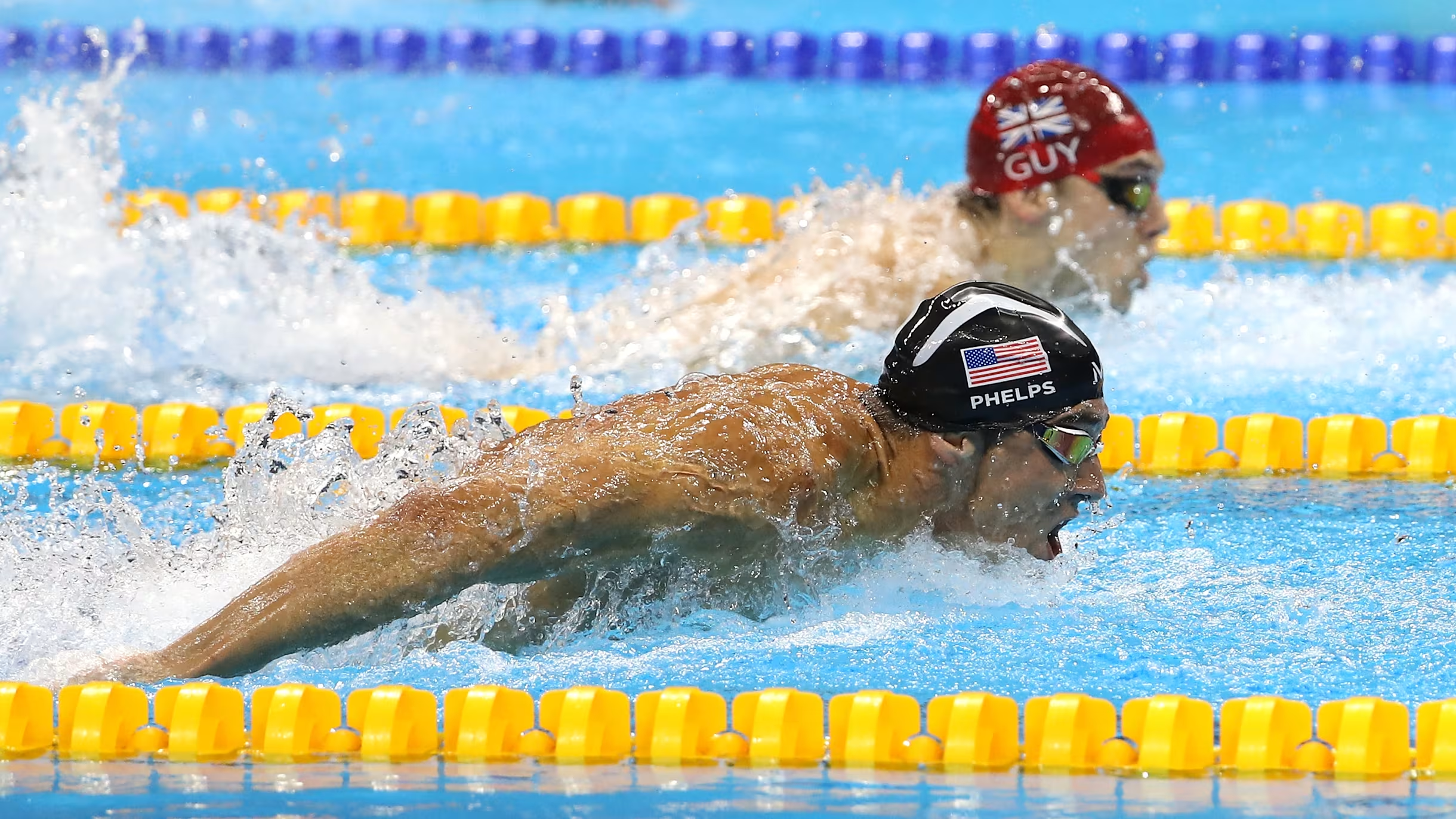amicitaacademy.com – Swimming is one of the oldest and most universal sports, combining athleticism, grace, and endurance. It is not only a competitive sport but also a valuable life skill that promotes fitness and wellness across all ages. Whether for competition or recreation, swimming offers a range of physical and mental benefits, and it remains a popular activity worldwide. Here’s a closer look at the history, benefits, types, and key techniques of this remarkable sport.
1. A Brief History of Swimming as a Sport
Swimming has been a natural part of human life for thousands of years, with the earliest records dating back to ancient Egypt, Greece, and Rome, where people swam in rivers, lakes, and the sea. However, it wasn’t until the 19th century that swimming began to take shape as an organized competitive sport.
In 1837, the National Swimming Society of England organized the first official swimming competitions. In 1896, swimming became one of the original sports in the first modern Olympic Games in Athens. Over time, swimming techniques evolved, and distinct strokes like freestyle, backstroke, breaststroke, and butterfly were established, each requiring different skill sets and athleticism.
Today, swimming is one of the most popular Olympic sports, drawing millions of viewers and athletes from around the world.
2. Physical and Mental Benefits of Swimming
Swimming offers a full-body workout that combines strength, endurance, and cardiovascular exercise. Here are some of the most notable benefits:
- Cardiovascular Health: Swimming is excellent for heart health, as it strengthens the heart and improves circulation. Swimming workouts increase stamina, boost metabolism, and reduce the risk of heart disease.
- Full-Body Strength: Unlike many sports, swimming works nearly every muscle group. The resistance of the water helps tone muscles without putting stress on the joints.
- Low-Impact Exercise: For those with joint issues or injuries, swimming is an ideal choice. The buoyancy of the water minimizes impact, making it suitable for people of all ages and fitness levels.
- Mental Health Benefits: Swimming promotes relaxation and has been shown to reduce stress and anxiety. The rhythmic movement and focus required for swimming can be meditative, providing mental clarity and a boost to overall mood.
- Improved Lung Capacity: Swimming requires regulated breathing, which increases lung capacity and improves respiratory health. This benefit is especially useful for athletes and those with asthma or respiratory conditions.
3. Types of Competitive Swimming Events
Competitive swimming includes various events, from short sprints to long-distance challenges, across four main strokes: freestyle, backstroke, breaststroke, and butterfly. Here’s a quick look at each stroke and some of the main events in competitive swimming:
- Freestyle: This is the fastest stroke, also known as the front crawl. Freestyle events range from 50 meters to 1500 meters.
- Backstroke: Swimmers lie on their backs and alternate arm and leg movements. Backstroke races range from 50 meters to 200 meters.
- Breaststroke: Known for its frog-like kick, breaststroke is often considered the most technically challenging. Breaststroke races range from 50 meters to 200 meters.
- Butterfly: This powerful stroke is characterized by a simultaneous arm movement and dolphin-like kick. Butterfly events are typically 50, 100, and 200 meters.
In addition to individual races, there are medley races (where swimmers perform all four strokes in sequence) and relay events, which involve teams of four swimmers competing together.
4. Techniques and Tips for Each Stroke
Each stroke in swimming requires specific techniques to maximize speed and efficiency. Here’s an overview of some fundamental techniques for each stroke:
- Freestyle: Keep your body streamlined, kicking from the hips rather than the knees, and rotate your body with each stroke. Bilateral breathing (breathing on both sides) helps with balance and ensures better technique.
- Backstroke: Maintain a straight, horizontal position on the water with a slight head tilt back. Focus on a continuous flutter kick and steady arm movement, aiming for smooth entry and exit of the hands.
- Breaststroke: This stroke requires a unique timing. Start with a glide, followed by a wide sweep of the arms and a frog-like kick. Breathing timing is crucial, so practice the pull-breathe-kick-glide sequence for a steady rhythm.
- Butterfly: Engage your core to create a wave-like body motion. Both arms should move in sync, while the dolphin kick (two-leg movement) provides propulsion. Butterfly is one of the most physically demanding strokes, so building strength and technique is essential.
5. Open Water Swimming: A Growing Trend
While swimming in pools remains the most common form, open water swimming—whether in lakes, rivers, or the ocean—has gained popularity in recent years. Open water swimming presents unique challenges, such as currents, waves, and lower visibility.
Many swimmers are drawn to open water events, such as triathlons and open water marathons, for the mental and physical challenge as well as the beauty of swimming in natural surroundings. Open water events range in distance, and swimmers must be well-prepared for colder temperatures, potential weather changes, and navigating through rough waters.
6. The Role of Technology in Modern Swimming
Technology has significantly impacted the sport of swimming. Advances in swimwear, such as the development of high-tech suits that reduce drag, have helped athletes achieve faster times. Many elite swimmers now use tools like underwater cameras and biomechanical sensors to analyze their technique and refine their strokes.
Wearable devices, like smart goggles, allow swimmers to track real-time metrics such as distance, pace, and heart rate, while swim-specific apps provide detailed data on training sessions. These advancements have helped swimmers at all levels improve performance and monitor progress.
7. The Global Popularity of Swimming and the Future of the Sport
Swimming’s popularity continues to grow worldwide. Its accessibility and diverse range of activities—from competitive racing to water aerobics and therapy—make it suitable for people of all ages and fitness levels. Major events like the Olympics and World Championships spotlight swimming on a global stage, inspiring new generations of athletes.
As the sport continues to evolve, innovations in training, technology, and sports science are likely to lead to new techniques and record-breaking performances. With its rich history and ongoing developments, swimming remains one of the most beloved and respected sports worldwide.
Conclusion
Swimming is a sport that celebrates strength, endurance, and skill. It combines rigorous physical demands with mental discipline and offers numerous health benefits. Whether you’re diving into the pool for fun or competing at an elite level, swimming is a rewarding activity that can be enjoyed for a lifetime. With its rich history, diverse techniques, and exciting future, swimming will continue to be a cornerstone of both fitness and sport.






